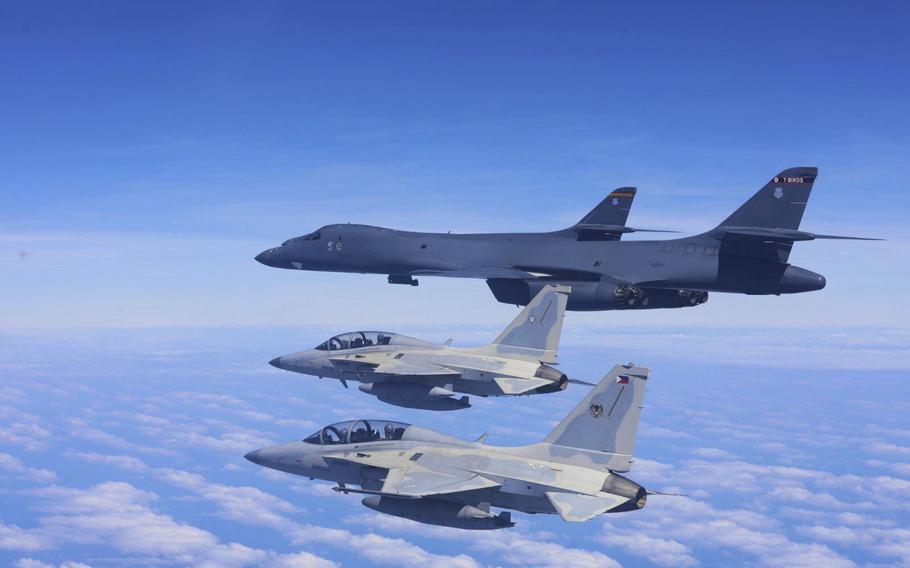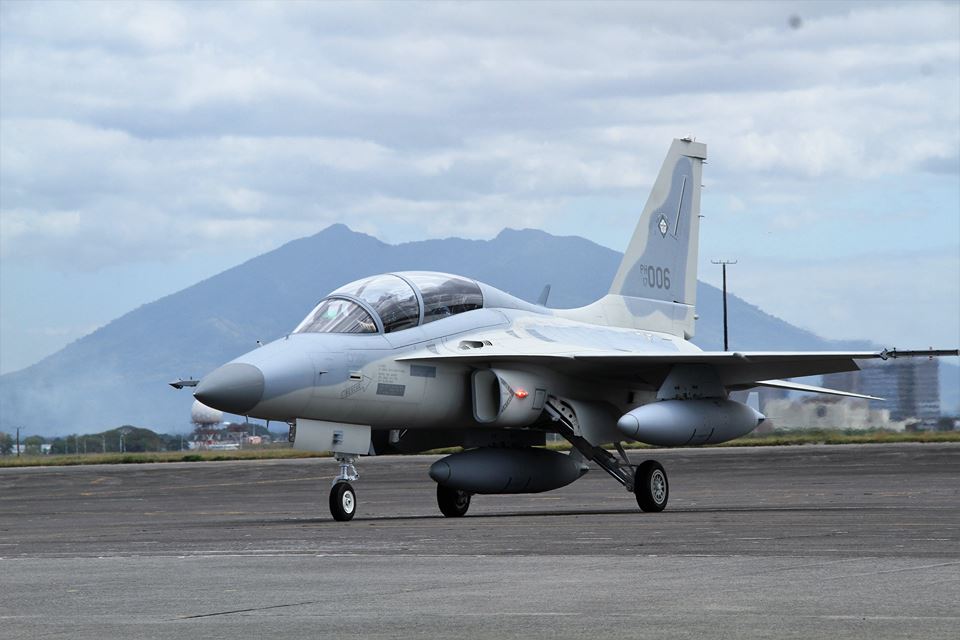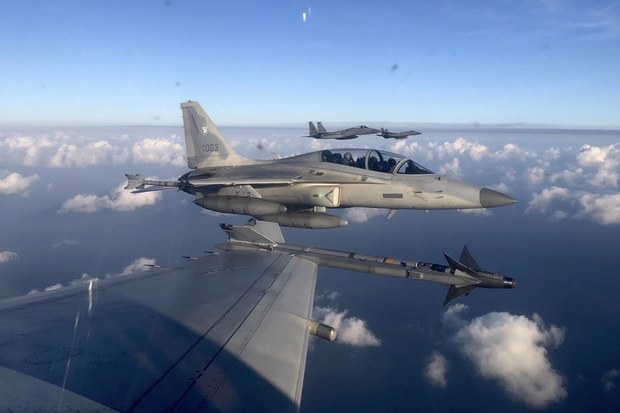Philippine Air Force FA-50 Fighter Jet Vanishes Mid-Mission, Massive Search Underway
In a statement, the Philippine Air Force said the aircraft lost contact with other jets in its formation just minutes before reaching its target area.
(DEFENCE SECURITY ASIA) –A Philippine Air Force (PAF) FA-50 fighter jet, carrying a two-man crew, vanished during an overnight operation from a base near Cebu, military officials confirmed on Tuesday (March 4).
In a statement, the Philippine Air Force said the aircraft lost contact with other jets in its formation just minutes before reaching its target area.
Colonel Consuelo Castillo, an Air Force spokesperson, told reporters the incident marked the first major mishap involving the FA-50 squadron—aircraft that had previously been deployed in training drills over the highly contested South China Sea.
The Philippines currently operates a fleet of 12 FA-50 jets, acquired from South Korea over the past decade as part of its military modernization efforts.
According to Castillo, the missing aircraft was flying over land toward its target zone when it vanished during a tactical night operation in support of ground forces.
She declined to provide further details about the mission, including its precise location or objective.

The fighter jet had departed from Mactan-Benito Ebuen Air Base, a facility that shares a runway with Cebu’s main airport in the country’s second-largest city.
“We remain hopeful that we will recover both the aircraft and its crew,” Castillo said, adding that the military remained optimistic about their safety.
The Philippine Air Force confirmed that it had launched an extensive search operation, deploying all available resources to locate the missing jet and its crew.
The FA-50 fighter jets have become an integral part of the Philippines’ air defense strategy, regularly participating in joint air patrols with treaty ally the United States over the disputed waters of the South China Sea, where tensions with China have steadily escalated.
Beijing asserts control over nearly the entire strategic waterway, a vital corridor for global trade, despite a 2016 ruling by the Permanent Court of Arbitration in The Hague, which found that China’s sweeping territorial claims had no legal basis.
In January, the local newspaper The Inquirer reported that the Philippine government was considering the acquisition of 12 additional FA-50 fighter jets as part of an ongoing military modernization initiative.
The country’s Department of National Defense (DND) is reportedly planning to purchase these additional FA-50s from Korea Aerospace Industries (KAI) with the aim of establishing a second fighter squadron within the Philippine Air Force.

The Philippine Air Force (PAF) currently operates a fleet of 12 FA-50 fighter jets in the Block 10 variant.
The proposed expansion would introduce 12 additional FA-50s in the more advanced Block 20 configuration—a model identical to those recently acquired by Poland and Malaysia.
The FA-50 Block 20 represents the fighter’s most technologically advanced iteration, featuring enhanced avionics and upgraded combat capabilities.
This procurement is part of Re-Horizon 3, a broader defense modernization initiative aimed at bolstering the Philippine Armed Forces’ aerial combat strength.
The Philippine Department of National Defense (DND) is targeting mid-2025 as the projected timeline for finalizing the acquisition contract for the FA-50 Block 20s.
The FA-50PH Block 10 was first delivered to the Philippines in 2015, following a $421 million (RM1.9 billion) agreement signed between Manila and Korea Aerospace Industries (KAI) in March 2014.
The first batch arrived in November 2015, with all 12 aircraft fully delivered by 2017.
The contract encompassed aircraft procurement, pilot and crew training, and basic logistical support, though it did not include precision-guided munitions or advanced weaponry, which had to be acquired separately.

For the Philippine Air Force, the FA-50 acquisition was a pivotal step in restoring the country’s air combat capabilities after more than a decade without a dedicated fighter jet fleet.
Since their arrival, the FA-50s have been actively deployed in tactical and strategic operations, playing a key role in national defense and internal security efforts.
Combat and Strategic Roles of the FA-50
-
Air-to-Ground Attack Operations
The FA-50PH has played a key role in precision strikes against ground targets. Its combat effectiveness was demonstrated during the 2017 Battle of Marawi, where it was extensively deployed to neutralize ISIS-linked militants in the southern Philippines. -
Surveillance and Maritime Patrol
The fighter jet is also utilized for aerial surveillance and maritime security missions, including patrolling Philippine airspace and contested waters. This capability is critical in safeguarding the country’s sovereignty, particularly in the South China Sea. -
Counterinsurgency and Quick Reaction Alert (QRA)
As a light combat aircraft, the FA-50 is well-suited for counterinsurgency operations and handling armed threats within Philippine territory. Additionally, it serves in a Quick Reaction Alert (QRA) role, maintaining readiness to respond swiftly to airspace incursions and national security threats. -
Advanced Fighter Pilot Training
The FA-50 is also an essential lead-in fighter trainer, preparing PAF pilots for transition to more advanced combat aircraft in the future.
With its versatility in combat, surveillance, and training missions, the FA-50 remains a cornerstone of the Philippine Air Force’s modernization efforts.
The planned acquisition of additional Block 20 variants is expected to further enhance the country’s aerial defense capabilities in the coming years.
— DEFENCE SECURITY ASIA



Correction: The 2016 International Arbitration Tribunal ruling was not a PCA ruling. The PCA merely provided a venue for proceedings and acted as the archivist for documents. The ad hoc International Arbitration Tribunal is one of three dispute resolution mechanisms under UNCLOS. Each participant has the right to appoint one Judge to the 5 Judge panel and ITLOS appoints the remaining 3 Judges. In this case ITLOS appointed 4 of the Judges since the Chinese refused to fully participate in the Arbitration Tribunal. However, China did file a brief with the Tribunal.